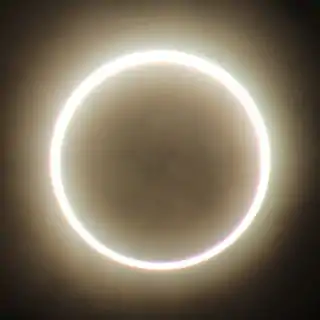| Solar eclipse of September 21, 2025 | |
|---|---|
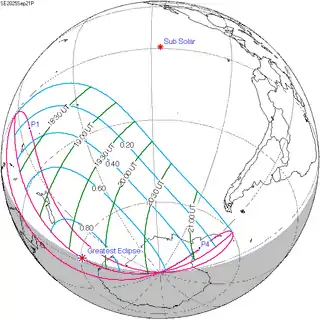 Map | |
| Type of eclipse | |
| Nature | Partial |
| Gamma | −1.0651 |
| Magnitude | 0.855 |
| Maximum eclipse | |
| Coordinates | 60°54′S 153°30′E / 60.9°S 153.5°E |
| Times (UTC) | |
| Greatest eclipse | 19:43:04 |
| References | |
| Saros | 154 (7 of 71) |
| Catalog # (SE5000) | 9564 |
A partial solar eclipse will occur on September 21, 2025. A solar eclipse occurs when the Moon passes between the Earth and the Sun, thereby totally or partly obscuring the image of the Sun for a viewer on Earth. A partial solar eclipse occurs in the polar regions of the Earth when the center of the Moon's shadow misses the Earth.
Images
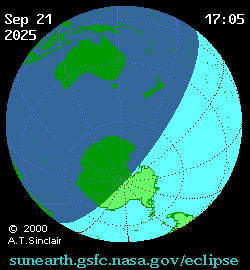
Animated path
Related eclipses
Eclipses of 2025
- A total lunar eclipse on March 14.
- A partial solar eclipse on March 29.
- A total lunar eclipse on September 7.
- A partial solar eclipse on September 21.
Solar eclipses of 2022–2025
This eclipse is a member of a semester series. An eclipse in a semester series of solar eclipses repeats approximately every 177 days and 4 hours (a semester) at alternating nodes of the Moon's orbit.[1]
| Ascending node | Descending node | |||||
|---|---|---|---|---|---|---|
| Saros | Map | Gamma | Saros | Map | Gamma | |
119.tiff.jpg.webp) Partial from CTIO, Chile |
2022 April 30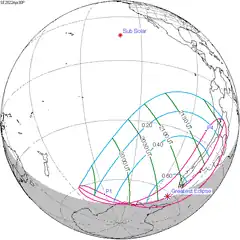 Partial |
−1.19008 | 124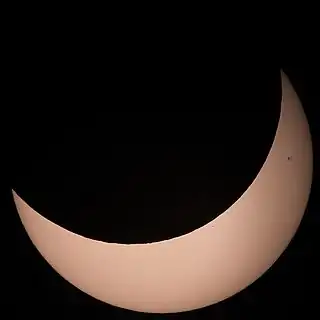 Partial from Saratov, Russia |
2022 October 25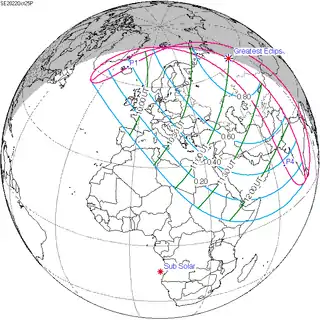 Partial |
1.07014 | |
129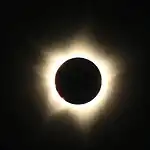 Total from East Timor |
2023 April 20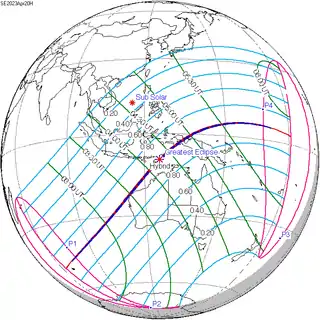 Hybrid |
−0.39515 | 134.jpg.webp) Annular from Campeche, Mexico |
2023 October 14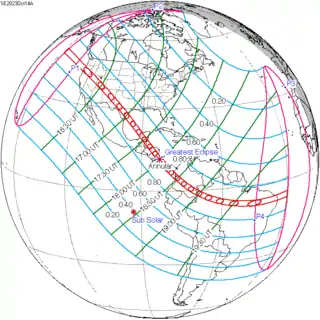 Annular |
0.37534 | |
| 139 | 2024 April 8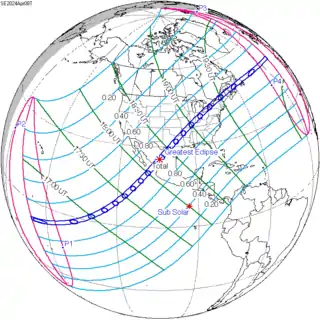 Total |
0.34314 | 144 | 2024 October 2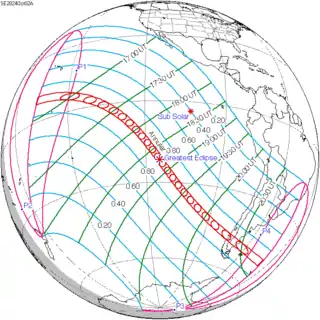 Annular |
−0.35087 | |
| 149 | 2025 March 29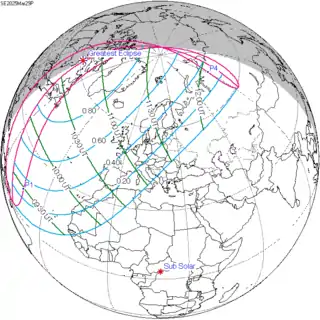 Partial |
1.04053 | 154 | 2025 September 21 Partial |
−1.06509 | |
Metonic series
The metonic series repeats eclipses every 19 years (6939.69 days), lasting about 5 cycles. Eclipses occur in nearly the same calendar date. In addition, the octon subseries repeats 1/5 of that or every 3.8 years (1387.94 days). All eclipses in this table occur at the Moon's descending node.
| 21 eclipse events, progressing from north to south between July 11, 1953 and July 11, 2029 | ||||
|---|---|---|---|---|
| July 10–12 | April 29–30 | February 15–16 | December 4–5 | September 21–23 |
| 116 | 118 | 120 | 122 | 124 |
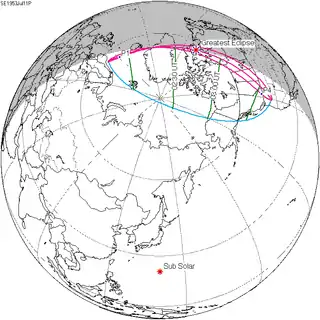 July 11, 1953 |
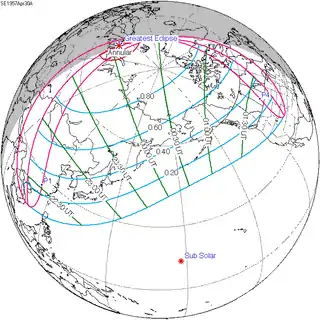 April 30, 1957 |
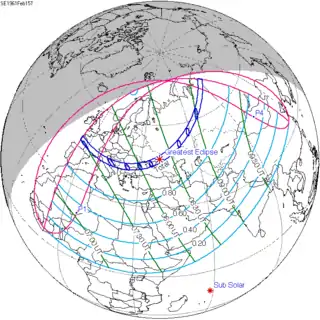 February 15, 1961 |
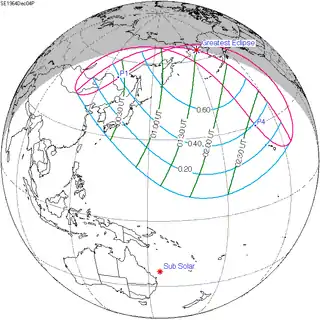 December 4, 1964 |
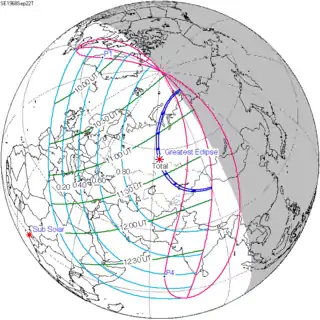 September 22, 1968 |
| 126 | 128 | 130 | 132 | 134 |
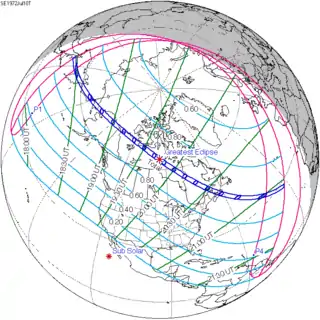 July 10, 1972 |
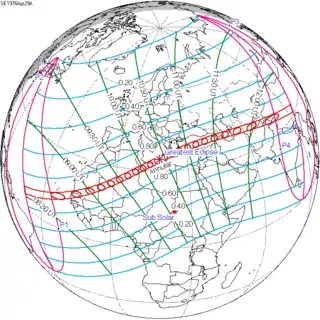 April 29, 1976 |
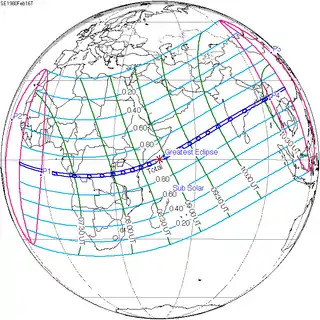 February 16, 1980 |
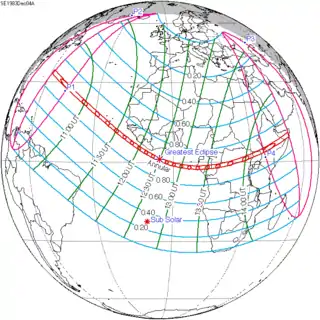 December 4, 1983 |
 September 23, 1987 |
| 136 | 138 | 140 | 142 | 144 |
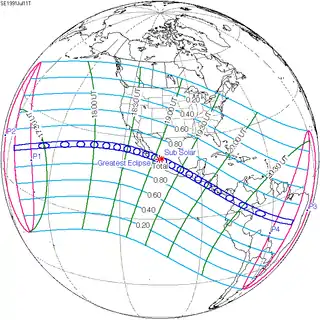 July 11, 1991 |
 April 29, 1995 |
 February 16, 1999 |
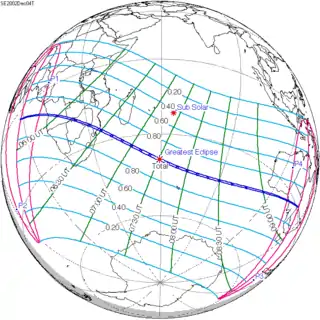 December 4, 2002 |
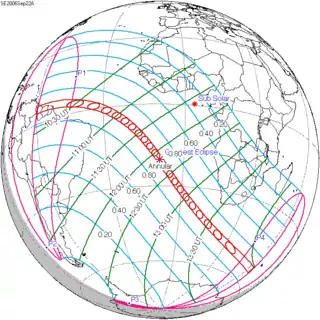 September 22, 2006 |
| 146 | 148 | 150 | 152 | 154 |
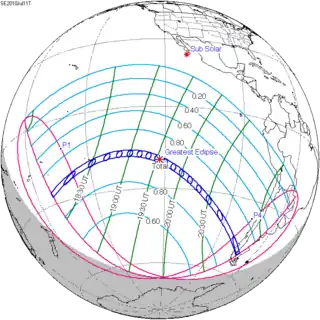 July 11, 2010 |
 April 29, 2014 |
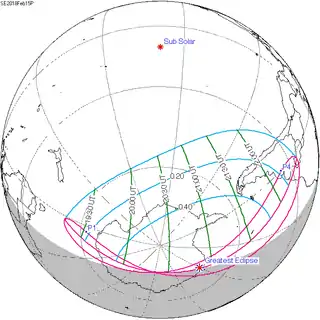 February 15, 2018 |
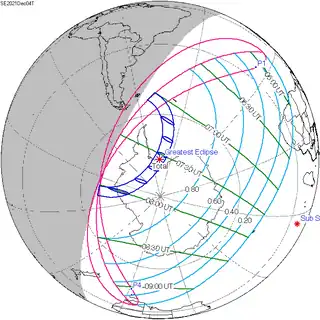 December 4, 2021 |
 September 21, 2025 |
| 156 | 158 | 160 | 162 | 164 |
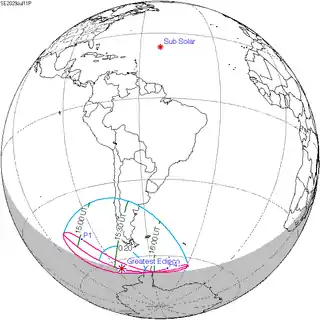 July 11, 2029 | ||||
References
- ↑ van Gent, R.H. "Solar- and Lunar-Eclipse Predictions from Antiquity to the Present". A Catalogue of Eclipse Cycles. Utrecht University. Retrieved 6 October 2018.
External links
- Earth visibility chart and eclipse statistics Eclipse Predictions by Fred Espenak, NASA/GSFC
.jpg.webp)
